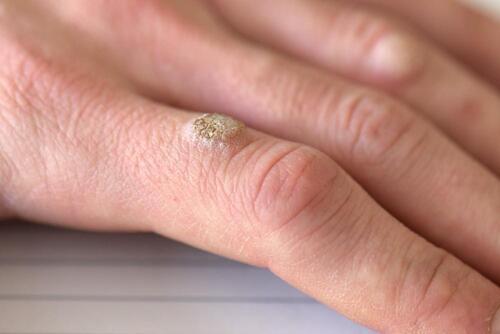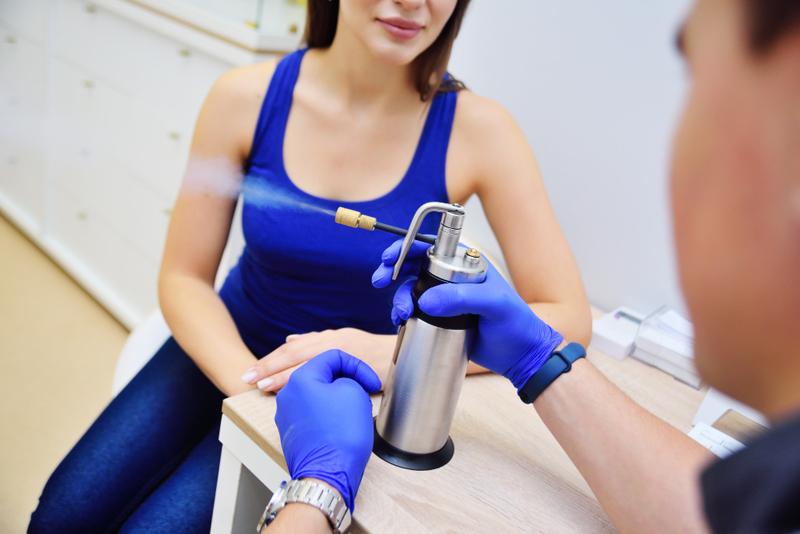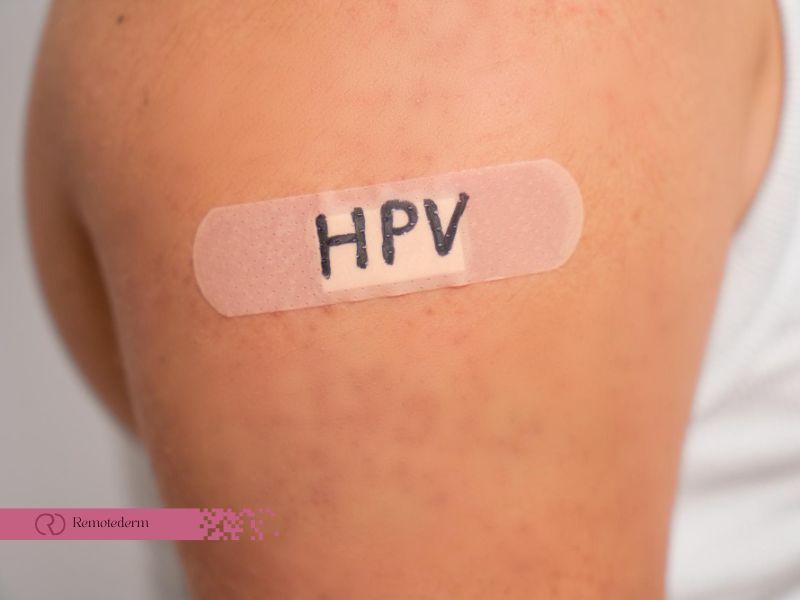Common warts, the most prevalent types of skin growths, may not be very pleasant to handle, but most people know what they are. However, they are scruffy and can spread to other people, just like the wart that comes across your skin. This article explores common warts in detail and mentions the reasons they occur, the ways they can be caught, and the techniques for their eradication.
What Are Common Warts?
Common warts are small, rough growths on the skin caused by a virus. Human Papillomavirus (HPV) is a virus that causes these skin diseases and growths, and it can strike anyone from young to old. These warts sometimes appear on the hands, fingers, and cuticles, but usually, they can pop up on any part of the body. The fact about them is subtleness, although they can really be annoying and a little bit of a problem every now and then. Key characteristics of Common Warts are:
- A type that is commonly seen as a bump with a warty feel
- A bumpy, harsh surface similar to that of a cauliflower
- They are either grey or brown and have black dots (these are tiny blood vessels)
- The affected parts are the fingers, elbows, knees and other body parts

Are Common Warts Contagious?
Yes, common warts are contagious. They spread through direct contact with the wart or with contaminated surfaces. So if you touch someone else’s wart or use shared towels, razors, or other items, you could end up with one too. However, not everyone who comes into contact with the virus will develop warts; your immune system plays a big role in whether or not you get one. How warts spread:
- Touching a wart directly
- Sharing personal items like towels or razors
- Walking barefoot in public areas like swimming pools or gyms
- Scratching or picking at a wart and then touching another area of your skin
What Causes Common Warts?
The main cause of common warts is HPV, which is a group of more than 100 viruses that affect the skin and mucous membranes. Some strains of HPV are more likely to cause warts, while others don’t. It’s important to note that HPV doesn’t always cause warts to appear right away; it can take weeks or even months before you notice a wart after being exposed to the virus.
Are Common Warts Caused by HPV?
Yes, common warts are caused by specific strains of the HPV virus. It’s not the same type of HPV that causes genital warts, but it’s still part of the same virus family. The virus spreads through skin-to-skin contact or by touching surfaces that have been contaminated with HPV.
Types of Warts
Warts come in various forms, and each type can display different appearances and can be located at different places. Here are the most common ones:
1. Common Warts
These are the ones we’re talking about in the article. Usually, they are small, raised, and rough. More often than not, they occur on the hands or fingers.
2. Plantar Warts
These warts are mainly found on your foot bottoms and can be so painful since you’re stepping on them all day long.
3. Periungual Warts
Periungual warts are the warts that first appear around the nails and may extend to the nail bed, which is why they can be difficult to treat.
4. Flat Warts
The main difference between these warts compared to the common ones is that they are smaller and smoother. Mostly they occur on the face, legs, or arms.
How to Treat Common Warts
While common warts are usually harmless, you may want to treat them for cosmetic reasons or because they can be irritating. There are several treatment options available:
- Over-the-Counter Treatments: There are various products available at pharmacies in Canada that can help remove warts, such as salicylic acid. This treatment works by softening the wart so it can be removed.
- Cryotherapy: This involves freezing the wart with liquid nitrogen, which destroys the tissue. This method is commonly done by a dermatologist and can be effective for stubborn warts.
- Laser Treatment: In some cases, your doctor may suggest laser therapy to treat more difficult warts. This uses intense light to destroy the wart.
- Surgical Removal: If other treatments don’t work, a healthcare professional may surgically remove the wart.

Can Common Warts Be Prevented?
Preventing warts is all about reducing your exposure to HPV. Since warts spread through direct contact, keeping your skin healthy and avoiding shared items can help lower your risk. Some usual things to do for prevention are:
- Don’t rub or touch a person who has warts
- Don’t walk barefoot in areas with other people’s skin debris, including swimming pools and locker rooms
- Don’t share your personal belongings with others, for instance, towels, razors, or nail clippers
- Make sure your skin is always clean and dry, especially if you have opened wounds
Are Common Warts HPV?
Yes, common warts are a result of HPV, though they are caused by different strains of the virus than those responsible for genital warts. While the HPV virus is quite common and can be found in many people’s skin, most of the time it doesn’t cause warts. Your immune system is key to preventing the virus from causing warts to appear.
Final Thoughts
Common warts are a pretty typical skin issue caused by the HPV virus. While they are contagious, they’re usually not harmful and often go away on their own. But if you’re dealing with them and they’re bothering you, there are plenty of treatment options available in Canada, from over-the-counter remedies to professional procedures like cryotherapy or laser treatments. Just remember to practice good hygiene, and if you’re unsure about anything, it’s always a good idea to consult a healthcare professional.
FAQs
1. Are warts caused by a bacterial infection? Warts are not caused by a bacterial infection but by a viral infection, which is the papillomavirus (HPV). Although a bacterial infection differs, the former still can be caught.
2. Will warts come and go on their own? Yeah, typically a great deal of warts in children disappear without medication, in many cases, months even years. In case, treatment may be used to make it work faster by the medical specialists.
3. Is my wart caused by periungual? A Periungual wart is one that grows around the nails and it causes both skin and the nail bed deficiency. They often have a peeling appearance however cause pain, notably when you are typing and using your hands.
4. Can the warts be transmitted to other people in Canada? People in parts of high human traffic like public pools or gyms are exposed to warts quite often. Regular hygiene practices are the means through which the risk is minimized.
